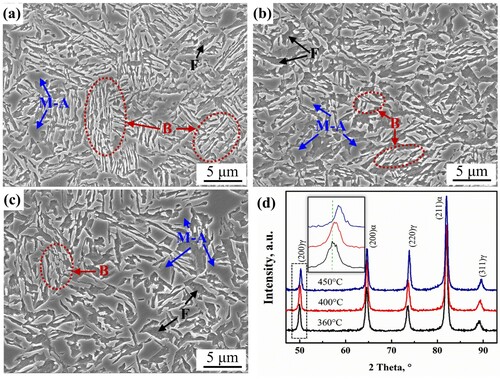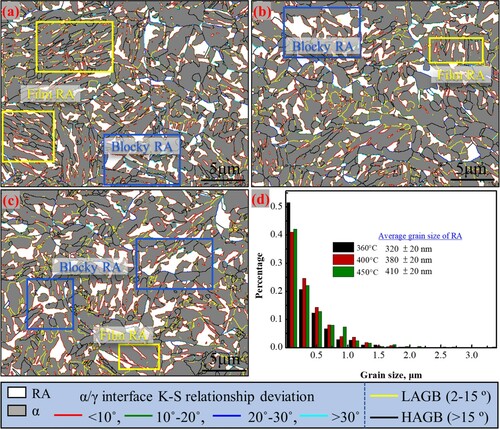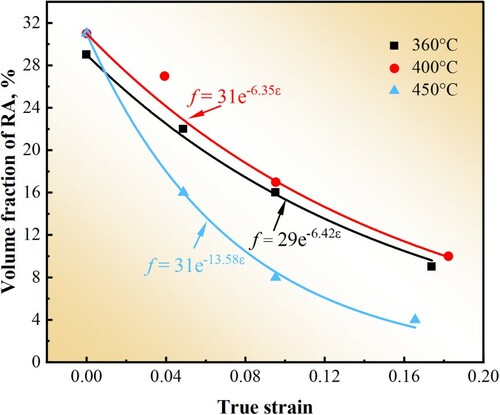Figures & data

Figure 1 (a) Engineering stress - strain curves of the medium carbon TRIP steels after bainitic holding at 360°C, 400°C and 450°C. (b) Increasing strain hardening capacity with increasing bainitic holding temperature. (c, d) Comparison of mechanical properties in this study with the previously reported TRIP assisted steels in literatures [Citation21, Citation25–Citation35]. IA: intercritical annealing, FA: full austenitized, BH: bainitic holding.
![Figure 1 (a) Engineering stress - strain curves of the medium carbon TRIP steels after bainitic holding at 360°C, 400°C and 450°C. (b) Increasing strain hardening capacity with increasing bainitic holding temperature. (c, d) Comparison of mechanical properties in this study with the previously reported TRIP assisted steels in literatures [Citation21, Citation25–Citation35]. IA: intercritical annealing, FA: full austenitized, BH: bainitic holding.](/cms/asset/5f5ac79d-8fee-4f7d-a48d-77737b969045/tmrl_a_2116295_f0001_oc.jpg)
Table 1. Mechanical properties of medium carbon TRIP steels after bainitic holding.
Figure 2. SEM images of medium carbon TRIP steels. (a) 360°C specimen, (b) 400°C specimen and (c) 450°C specimen. (d) The corresponding XRD patterns, and inset showing the magnified (200)Y peak. RA: retained austenite, B: bainite, F: ferrite, M: martensite.

Figure 3. Interface characterization of medium carbon TRIP steels. (a) 360°C specimen, (b) 400°C specimen, and (c) 450°C specimen. (d) The corresponding average grain sizes of RA (d). LAGB: low angle grain boundary, HAGB: high angle grain boundary.

Figure 4. Evolution of RA volume fraction as a function of true strain for medium carbon TRIP steels after bainitic holding at 360°C, 400°C, and 450°C.

